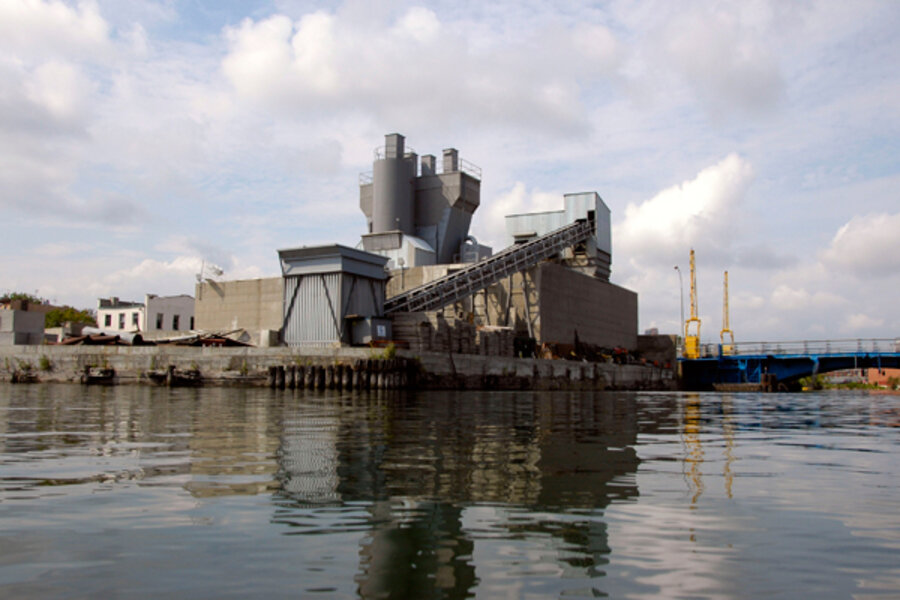EPA adds 10 sites to the Superfund list
Loading...
After years of languishing as the neglected stepchild of environmental enforcement, there are signs that the Environmental Protection Agency’s Superfund program is beginning a big shift in priorities for cleaning up federal toxic waste sites, advocates say.
On Tuesday the EPA announced 10 new sites, bringing the total to 1,279 sites on the Superfund's national priority list and eight more on the waiting list, for a total of 61 proposed sites awaiting final agency action. [Click here to see the list of new sites.]
The new additions, along with increased enforcement action in 2009, were seen as signs of progress by some activists and close observers.
“These site additions may be smaller in number than in Superfund’s heyday, but [along with the enforcment numbers] are a sign they're starting to get serious again,” says Rena Steinzor, president of the Center for Progressive Reform, a Washington think tank, who has studied Superfund effectiveness and funding.
An EPA spokesman said the additions represented about the same rate as past years, although an annual total won’t be known until a second group is released in the fall.
But Ms. Steinzor notes that those site additions come on the heels of the EPA reporting an “exceptional year for the Superfund enforcement program” in fiscal 2009, the Obama administration’s first nine months of enforcement.
During that period, responsible parties committed to pay about $2 billion to clean up Superfund sites, the second highest amount since the program began in 1980. That included $371 million in settlements with responsible parties reimbursing the government for money the agency spent cleaning up Superfund sites, the highest cost recovery total in a fiscal year since Superfund began. [Click here to see EPA enforcement actions.]
But it is EPA administrator Lisa Jackson’s public commitment to “environmental justice” (many Superfund sites are near poor communities), together with the enforcement spurt and updated lists that together signal a renewed willingness to tackle the nation’s most intransigent pollution problems almost 30 years after the program began, observers say.
“It’s really encouraging to see all these sites added – and stiffer enforcement,” says Lois Gibbs, executive director of the Center for Health, Environment and Justice in Falls Church, Va. “But we think [that] to achieve real progress, Congress will need to restore the 'polluter pays' funding.”
As a community organizer at the infamous toxic “Love Canal” waste site in 1978, she recalls the original Superfund site authorization signed by President Carter in 1980, which began as a program in 1981 under President Reagan. But the fund’s primary funding mechanism, which required producers of toxic materials to pay into a fund for cleanup of those materials, expired in the mid-1990s. Since then, the EPA has had little funding of its own to finance cleanups. So it has had to go, hat in hand, to polluters, Ms. Gibbs says.
Having an actual fund financed by polluters historically allowed the EPA to drive tougher bargains, she and others agree. Basically, if the polluter wanted to fight in court, the EPA could afford to simply clean up the mess and await the outcome of the case with a bill awaiting the company for the federal work. But without those funds, relying only on its own budget, the agency has been forced to work deals with companies for much work to get done at all, Gibbs says.
Despite progress in 2009, there are still many hundreds of sites where little action is taking place, she says.
With that in mind, perhaps, President Obama and Ms. Jackson have both publicly said they intend to push for Congress to reinstate the polluter-pays provision of the law. However, Mr. Obama has said he wants to wait until 2011 for the economy to improve before doing that, Gibbs says.
“We expect the president to push Congress for polluter-pays funding next year,” she says. “In the meantime, it's really good to see these sites being added. It means someone is going to move these sites forward. Some of these have been pending forever.”
One of those sites newly added to the list is the Gowanus Canal in Brooklyn, N.Y. Since the early 1900s, the canal has been flanked by chemical factories and refineries that have dumped chemicals into it, creating a smelly toxic mess. Gasoline on the canal surface caught fire in 1946. Millions of gallons of heating oil leaked into it in 1976. Now, it’s finally a federally recognized Superfund cleanup site.
“Basically these sites have remained there moldering and getting worse, and the Bush administration just ignored them,” Steinzor says. “None of the problems have gone away. Nothing has changed really – except this is a different attitude now.”
-----





